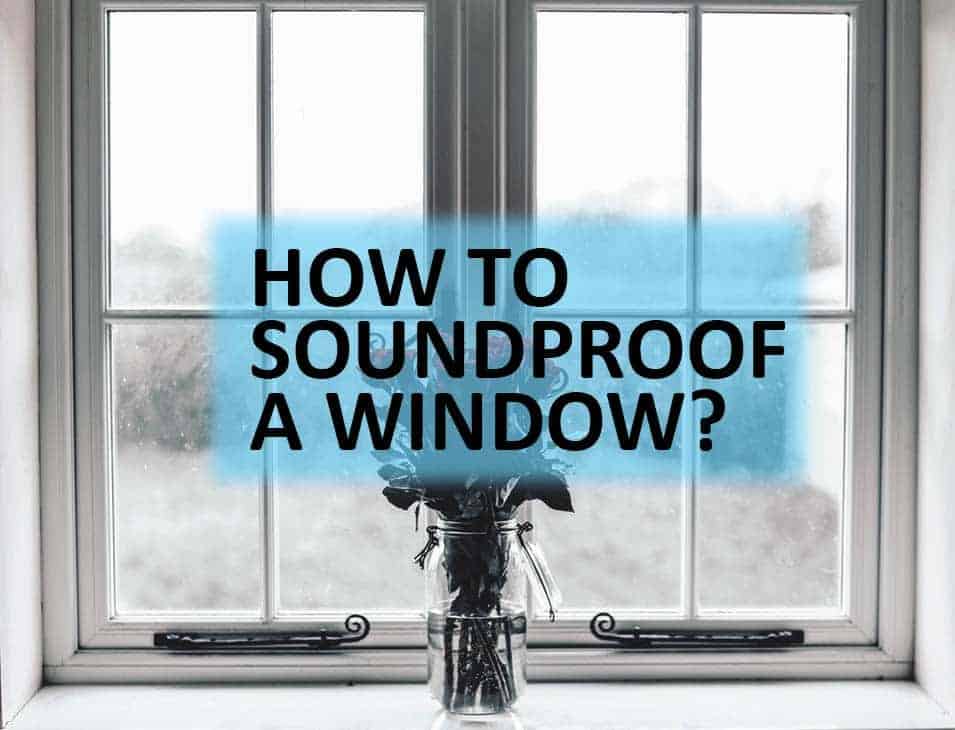Recently, I moved to the busier part of the city which happen to have restaurant below my apartment and a nightclub just across the street.
Some may feel that living at such a lively location is a treat, but sadly, it is not.
I work from my home office, and I found myself struggling to concentrate and get any work done. With the unbearable honking of cars and loud music in the streets, I had trouble sleeping too.
I decided to end my miseries and started looking for ways to reduce the noise coming into my room, mostly through windows.
Although I wasn’t expecting a complete noise reduction without professional help, the results left me completely amazed. Soundproofing my apartment window made my room so much quieter and peaceful. Not only does it help in blocking the noise from outside, but it also prevents sound from escaping the room. It worked like magic for me, and so I would love to share the different ways of soundproofing windows all by yourself, along with their costs. Page Contents Before you go on choosing a soundproofing technique, it is essential to understand the type of sound you are trying to block as It makes a huge difference. Is the noise constant, reoccurring, or occasional? What is the intensity of the noise? An evaluation is necessary before choosing the best DIY project. After all, you don’t want to invest your precious time & resources in the wrong project and regret it later. There are several ways to soundproof the windows in your room. Some may work better than others for your requirements. Stick with me to find the best possible solution for you. Noise can enter your room from the smallest spaces. And if you observe, you might find small gaps & holes between the window frame and the wall, especially around the edges. Not only are these aesthetically unpleasing, but they can also be the entry-gate for outside noise within your room. Hence, for sound blocking, it is necessary to ensure that all these gaps are completely sealed. Soundproofing is all about paying attention to the tiniest of details. Using conventional adhesive for soundproofing wouldn’t be effective as it will form a bridge for sound waves to pass easily.Best Ways To Soundproof a Window (What Worked For Me)
1. Seal All Gaps Around The Window
Acoustic Caulk
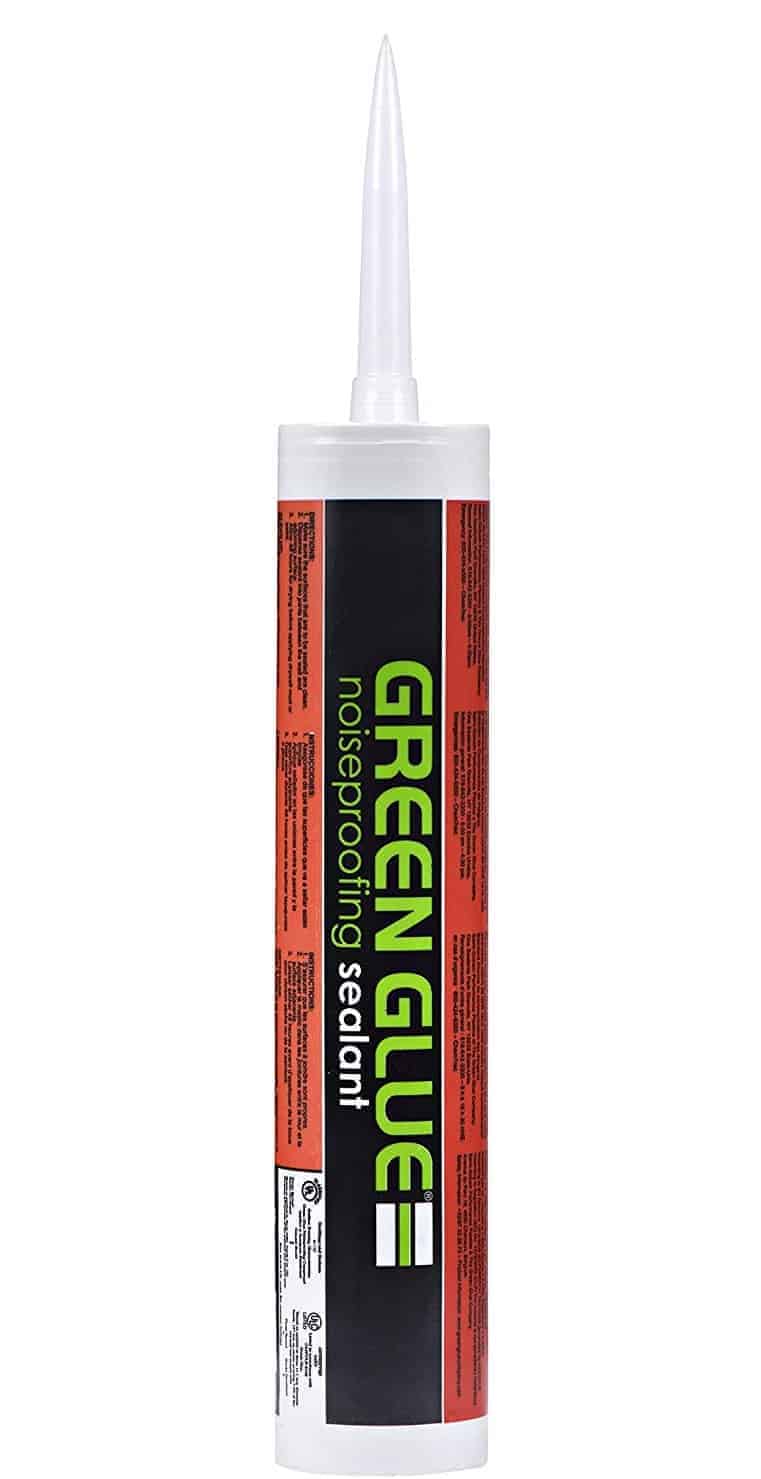 It is flexible, cost-effective, durable, and is easy to use. What more do you need in a sealant to fill the tiny gaps?
It is flexible, cost-effective, durable, and is easy to use. What more do you need in a sealant to fill the tiny gaps?
Acoustic caulk is essentially a rubber-like sealant that does not harden with time. It has been specially designed to reduce sound transmission. This handy quick-fix is much more durable than the ordinary caulk, and can easily last up to three-four years. It does not shrink or has cracks like regular caulk, and stays flexible all the while.
All you have to do is apply this sealant to the gaps between the window frame & wall, and let it sit for at least 48 hours. Also available in several colors, you can easily find this permanent solution to fill those tiny little gaps at for just $20 or even less!
Weather-Stripping Tape
Available in the market for less than 10 bucks, this small tool acts like magic in meeting all soundproofing and insulation needs. This seal strip usually made up of foam, rubber, or silicone, is very easy to install.
All you have to do is to clean the window entirely with a washcloth, cut the tape into your desired length, and neatly apply it to the window edges.
The best part of using these weather-stripping tape is that it will not only help in blocking the noise from outside but also insulate your home from cold winds & hot waves, also preventing water leakages.
You can also use these in sliding windows to reduce the noise incoming from the moving parts of the window, which are much more challenging to seal. Plus, it is super cheap!
2. Get Noise Cancelling Curtains
The basic rule of soundproofing states that ‘The simplest weapon against noise is to add mass to the surface.’
Hence, the easiest method to reduce the noise in your room without sacrificing with the air and light is by using thick, sound-absorbing curtains to cover the windows completely. Use these curtains whenever you need to focus on work and undrape them when you want to let the breeze come in! Simple, isn’t it?
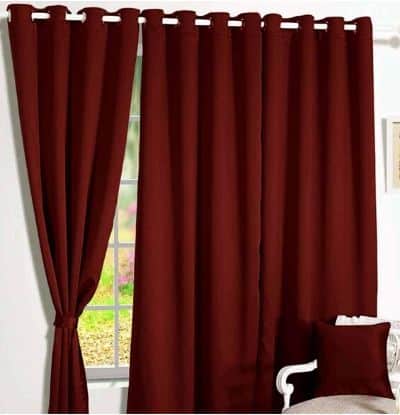 Although they do not block out the noise completely, they will surely be useful in deadening its overall impact. Soundproof curtains are used to absorb echo within a room, making it much quieter.
Although they do not block out the noise completely, they will surely be useful in deadening its overall impact. Soundproof curtains are used to absorb echo within a room, making it much quieter.
These sound deadening curtains are quite thick & heavy, which act not only as a sound absorber but also blocks the unwanted light. So if you are not a morning person and love to sleep long, this is the solution for you.
These dense sound dampening curtains are usually made up of velvet, satin, or polyester, which will also help you in reducing the electricity bill by providing more insulation to the windows.
The best part of these sound deadening curtains is that you don’t have to compromise with the aesthetic appeal of the room. They are available in different designs, colors & textures, and they will add up to your bedroom décor.
Plus, it is also quite cheap and readily available. You can find sound-proofing curtains under $70 on Amazon, or you can visit your local store home store and choose something which matches your vibe.
3. Install Thick Blinds over the Windows
Another way to reduce noise coming in from the windows is by the installation of thick blinds or shades over the windows.
The installation is pretty quick and easy and can help a lot in noise reduction within the house. You can also look for sound-absorbing shades, made of thick, dense materials with a special honeycomb structure to trap sound waves within it. If the light is not as big a problem as noise, this can be effective for you.
Using these blinds not only add a lavish touch to your interior, but also give a sense of security and peace and block the unwanted light at a meager price.
Though this method does not guarantee complete noise cancellation, it can be handy if coupled with some other noise reduction technique.
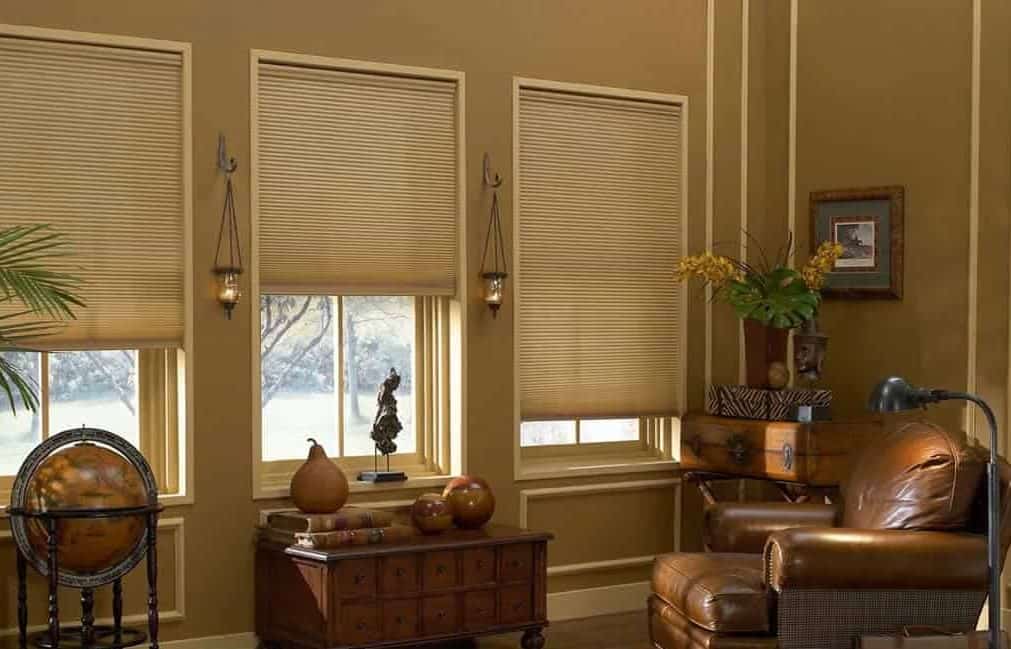
4. Replace the windows with Double-Pane Windows
The number of panes in a window, the type of glass used, and the space between the window panes can significantly affect the sound transmission through the windows.
So if you have a considerable budget in hand for your soundproofing project and you are looking for a long-term solution, replacing the windows with a more effective one can be the right plan for your investment.
- Mass – The thicker window glasses are, the more effective it will be for soundproofing.
- Air Space – More distance between the window panes can lead to effective in preventing sound transmission.
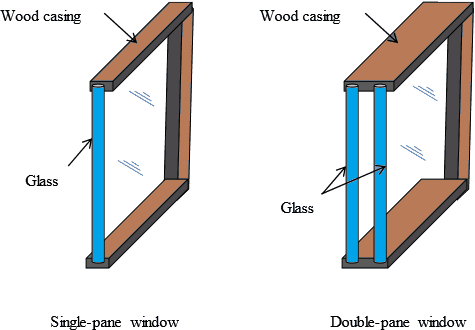
Old, single-pane windows offer little resistance to the sound vibrations and heat insulation and often have air gaps, weak frames, and installations faults.
Double panes windows can help in reducing the noise by up to 60%. Not only will it help in reducing the noise level, but also keep your room warmer in winters and cooler in summers by providing extra insulation.
However, special care must be taken during the installation of these windows. Poorly installed sound-proof windows will be ineffective, even after all the hassle.
5. Add a Glass Layer to your Window
If you are looking for similar results with a lesser budget, you can choose to install another sound-insulating layer of glass over your window. Much cheaper & more viable option than buying whole new window frames, this method will help in reducing the noise without blocking the outside view and the natural light.
Make sure the glass completely sealed airtight over the window frame to avoid any gaps.
Even though it may seem like a huge hassle, the results will be worth it. Plus, this can be a permanent solution to your noise pollution problem.
6. Use Acoustic Sound Barrier
With the improving technologies in recent times, soundproofing professionals have recently designed acoustic sound barriers, which can be used as a sound barrier between the room and the outside world.
These barriers not only prevent outside noise from entering into the room but also block noise from escaping the room by barbing the sound waves. Some readily available sound barriers are:
Acoustic Sound Panels
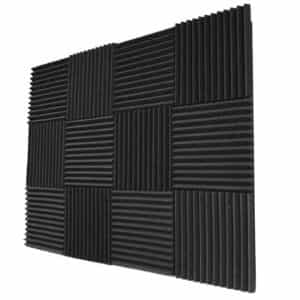 A lot heavier and way thicker than the regular soundproofing curtains, acoustic panels made up of quilted fiberglass can act as excellent sound stoppers from both the sides of the window.
A lot heavier and way thicker than the regular soundproofing curtains, acoustic panels made up of quilted fiberglass can act as excellent sound stoppers from both the sides of the window.
It is made up of sound-absorbing material which can be used to reduce echo and absorb sound-waves. These panels are inexpensive & removable, and they can be easily hanged around the window to achieve effective noise reduction.
Mass Loaded Vinyl
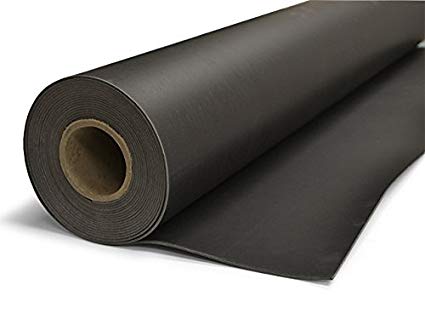
Mass Loaded Vinyl, or (MLV), is a dense and heavy material that can be used out of sight windows to absorb noise. Made up of PVC and Vinyl, this is a thin & flowy barrier, especially stop sound vibrations.
Even though they are not very appealing visually, they can be painted over or covered with a soundproofing curtain.
7. Use Window Plugs
A window plug is nothing but a simple, air-tight window frame that can be used to cover the window space temporarily to block outside noise without making any permanent infrastructural changes.
The best part of this method is that you can use it for a while to block the light & sound and remove it when the noise problem is gone as if it never existed.
A window plug can be designed at home with very less investment, and making window plugs is easier than you can imagine. It is very effective in soundproofing the small leakages. Window plug will snugly fit into the window frame without leaving any gaps, and form a layer between the room and the outside world.
- Fiberboard
- Acoustic Foam
- Strong Adhesive
- A Measuring Tape
- Cupboard Handle
That’s it! You’re halfway there. Here’s a step-by-step guide on How to Make a DIY Window Plug –
Step 1: Using the measuring tape, measure the depth of the window sill and the dimensions of the window. The thickness of the acoustic form used in the plug should be at least half the depth of window sill, whereas the length and breadth should be an inch more than the window frame. This will provide some buffer area.
Step 2: Transfer the dimensions of the window frame to the fiberboard and cut out a piece equal to the window frame.
Step 3: Attach this fiberboard over the acoustic foam. The fiberboard will not only serve as the backing board for the acoustic foam but also act as another insulation air to block sound waves.
Step 4: For adding & removing the plug on the window with ease, you can attach handles over the fiberboard.
Making a window plug is much easier than assembling DIY furniture. For better results, you can also add a further layer of acoustic foam to the back of the fiberboard.
Points to remember before you start sound-proofing your window:
- Rearranging the furniture can be quite helpful in reducing the overall noise. As noise travels with the sound, placing soft and thick furniture pieces like sofa or wall hangings can be helping in dampening the overall noise within the room.
If the window is not in use, you can cover it with a cupboard or wardrobes to reduce the sound vibrating entering the room.
- Different types of glasses & materials used in making the windows have different sound-absorbing capabilities.
Materials having higher STC rates are better for the overall soundproofing of your windows. - Even the slightest of gaps or holes left between the window frame and the wall can make the whole process ineffective. Special attention should be given to ensure that all the gaps are sealed shut, and there is no entry point for outside noise.
- Every method offers a different level of noise reduction, and no solution can fit perfectly for every situation.
Some are meant for just reducing the impact of sound vibrations, while others are more effecting in blocking the outside noise. Hence, choose according to your needs and the level of noise outside. - Sometimes, one solution might not be sufficient on its own, and it might be necessary to make a combination of two or more techniques to attain a peaceful, quiet environment within your home.
Conclusion On Soundproofing Windows
As someone who has adopted these methods and performed them myself at my home, I can assure you than no way will dishearten you in your desire to have a good night’s sleep. I didn’t know that the sound-proofing window is even possible without professional help.
I am so much happier with the calm & peaceful environment within my home; sometimes, it doesn’t also feel like I live in the same apartment.
The techniques may vary from really cheap DIY to costly & long-term expenditures in terms of their costs, but they all are worth it. So, what are you waiting for? You are just a step away from your peace of mind, take that one step now!

